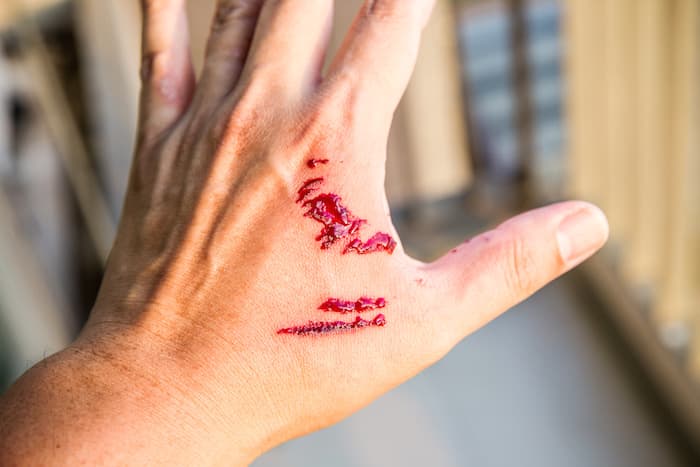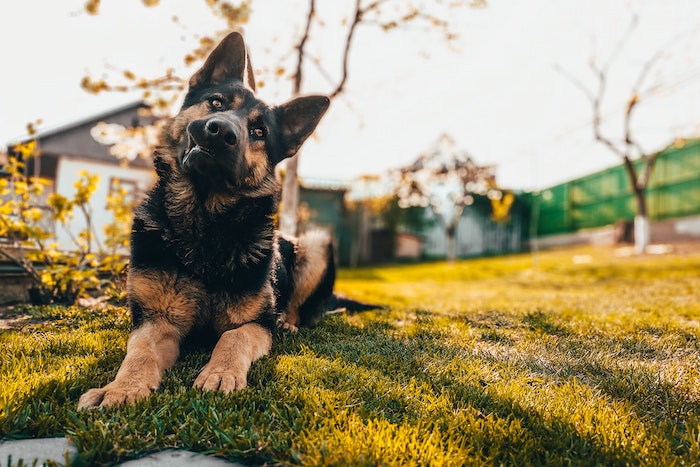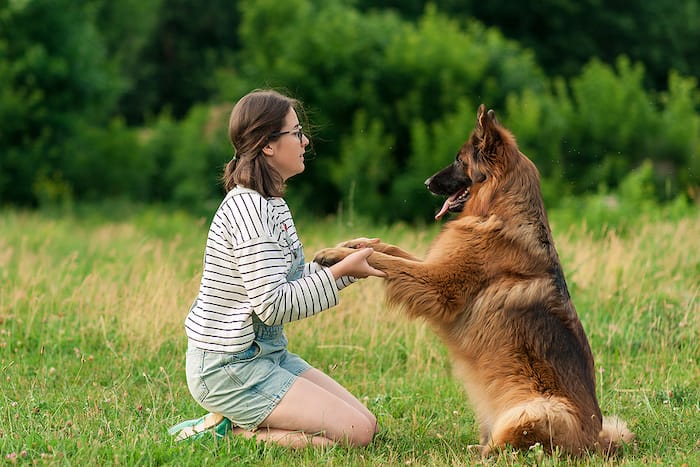Dogs truly are the human’s best friend. However, as friendly as most dogs can be, unfortunate incidents may occur where they bite someone else. Dog bites can be a distressing experience for both the victim and the dog owner – not only can the victim potentially sustain severe injuries, but you may also be legally prosecuted for this as the owner. For this reason, it is essential to train our canine companions to prevent any incidents of biting and ensure the safety and well-being of everyone involved.
This article will outline and explore dog bite prevention and provide you with a few proven and effective methods to train your dog not to bite. By employing these techniques with consistency, patience, and positive reinforcement, you will be able to foster a well-mannered and friendly pet.

Early Socialization
The foundation for preventing dog bites lies in early socialization. Dogs may bite because they feel scared or threatened – if they are not used to being exposed to a range of environments, it may quickly trigger their fight response. Introduce your pup to a wide range of people, animals, and environments in their critical learning stage, typically between three and fourteen weeks old. This exposure helps dogs develop appropriate behavior around strangers and other animals, reducing their inclination to bite out of fear or protectiveness. Organize safe playdates, visits to pet-friendly locations, and obedience classes to enhance their confidence and acclimatize them to different situations.
Positive Reinforcement
Most individuals are familiar with this concept – it works wonders to get your pup to behave like an exemplary canine. Utilize positive reinforcement methods to encourage desirable behaviors and discourage biting. Reward your dog with treats, praise, or their favorite toy for good behavior, such as gentle play or sitting calmly rather than biting. This creates an association between positive actions and rewards in their mind, motivating them to avoid biting. Avoid negative reinforcement or punishment-based techniques as they can breed fear and anxiety, ultimately counteracting the training progress. The latter can also increase the dog’s likelihood to attack someone else, as they may feel threatened by other people.
Bite Inhibition Training
Puppies commonly bite everyone and everything around them. Albeit before their teeth are developed this remains a painless experience. However, eventually, they must learn that their bite has power and can cause some damage. Instilling bite inhibition is crucial from an early age. By enabling puppies to learn the strength of their bites, you teach them to control their impulses and limit the chances of causing injury in the future.
When your puppy bites too hard during play, let out a loud yelp or say “ouch” in a high-pitched voice to startle them. Immediately withdraw attention, ignoring them for a short period, mimicking how an injured puppy’s littermates would respond. Repeating this process consistently will impart the understanding that biting leads to the end of playtime or attention.

Controlled Exposure to Stimuli
As discussed previously, you should expose your dog to a range of environments so they can get familiar with experiencing different emotions. Gradually expose your dog to various stimuli under controlled conditions. Begin by introducing them to gentle and predictable situations, gradually progressing towards more challenging environments and scenarios that might typically trigger fear or aggression. This method helps your dog to learn self-control, reducing impulsive reactions, and lowering the likelihood of biting. Seek professional guidance if dealing with severe fear or aggression issues.
Seek Professional Help
If your dog exhibits persistent behavioral issues or aggressive tendencies that lead to biting, consult a certified animal behaviorist or professional dog trainer. These experts can properly assess the underlying causes and design a customized training plan to address your dog’s specific needs. Timely intervention and expert guidance are essential to prevent potential biting incidents and safely manage your dog’s behavior. The purpose is to ensure that your dog is trained well to ensure that it can behave as expected.
However, there may be times when your dog may lose control or someone may provoke it, causing him to react in a negative way. Dog bites are common injuries involved in personal injury cases, which should be dealt with by professional attorneys. If you find yourself in this situation, ensure that you consult with a professional that may be able to support your legal case.
Proper Handling Techniques
Teach your dog to become accustomed to gentle handling right from when they are puppies. Regularly hold, stroke, and touch them, starting with less sensitive areas before slowly including paws, ears, and tail. Use treats and praise to reinforce calm and passive behavior during handling sessions. Positive experiences with gentle touch will ensure trust and reduce the chances of biting due to fear or discomfort.
Provide Appropriate Chewing Alternatives
Dogs often resort to biting out of boredom or teething discomfort. Provide appropriate chewing alternatives such as dog-safe toys, ropes, or dental chews. Encourage your dog to focus their energy and biting desires on these designated items, redirecting their attention away from unacceptable biting behavior. Ensure the toys are durable, size-appropriate, and do not present choking hazards.

Encourage a Calm Environment
Creating a calming environment helps minimize triggers that may cause a dog to resort to biting. Reduce excessive noise, chaos, and stressful situations within your home. Establish consistent routines, especially during feeding and playtimes, to foster a sense of predictability and security. Additionally, providing a designated quiet space or crate where your dog can retreat when they feel overwhelmed can be beneficial.
Enroll in Obedience Training Classes
Formal obedience training provides a structured environment for dogs to learn appropriate behaviors, respond to commands, and socialize with other dogs and humans. Professional trainers can guide you in employing positive reinforcement techniques while addressing any specific challenges your dog may have. Obedience training promotes discipline, and respect, and enhances your dog’s ability to communicate non-aggressively, reducing the risk of biting incidents.
Consistency and Patience
Consistency is key in any dog training regimen. Maintain regular practice sessions with your puppy, and reinforce positive behaviors consistently to ensure long-term results. While progress may be gradual, it is crucial to remain patient and refrain from getting frustrated. Building trust and confidence between you and your dog will contribute to a successful training experience.
Training your dog not to bite requires a balanced combination of early socialization, positive reinforcement, and controlled exposure. By applying the ten methods outlined in this essay, you can prevent biting incidents and develop a well-behaved and friendly canine companion. Remember, training is an ongoing process that demands consistency, patience, and a deep understanding of your individual dog’s needs. With dedication and effort, you can create a safe and enjoyable environment for both your dog and those around them.
